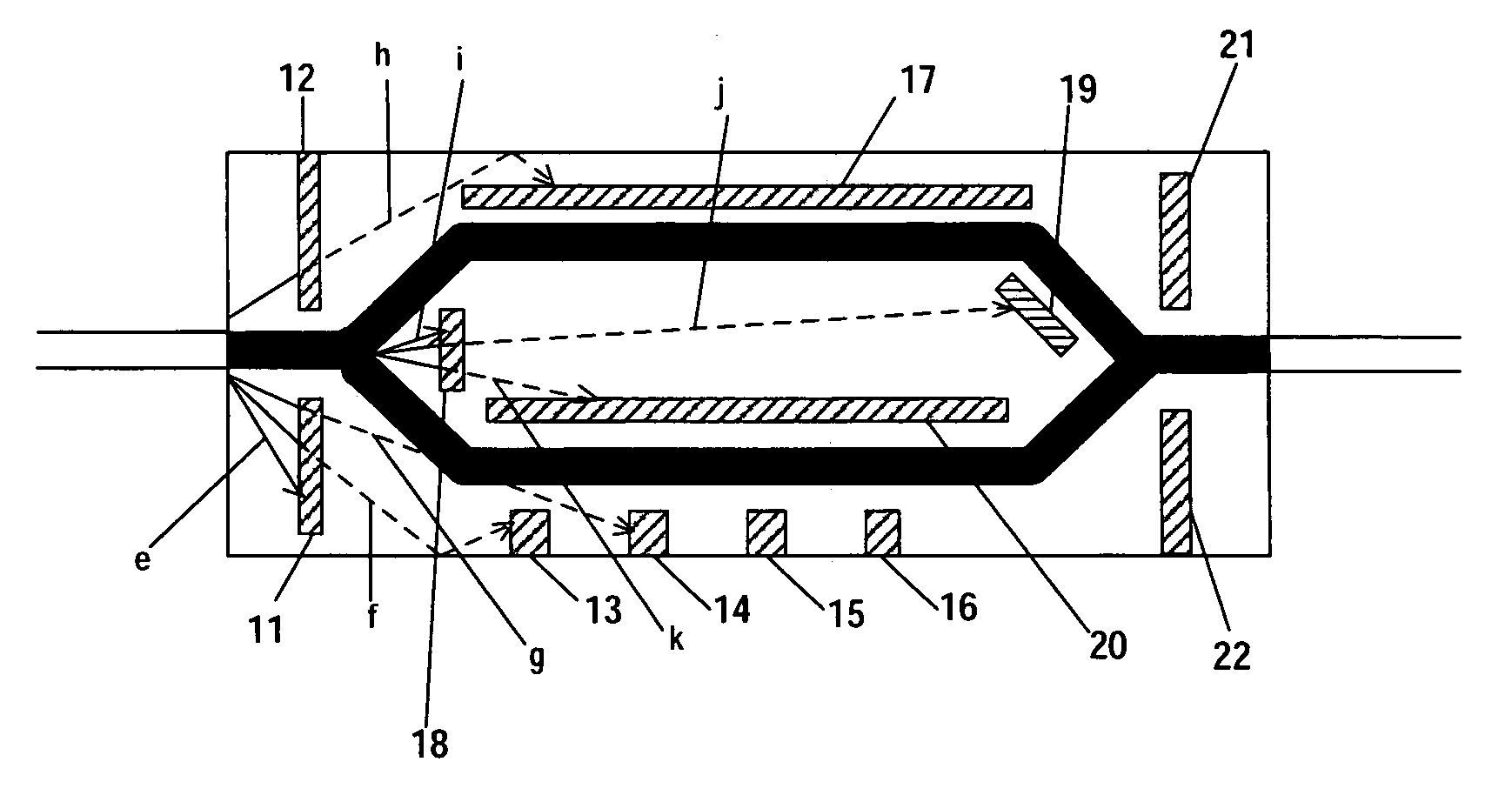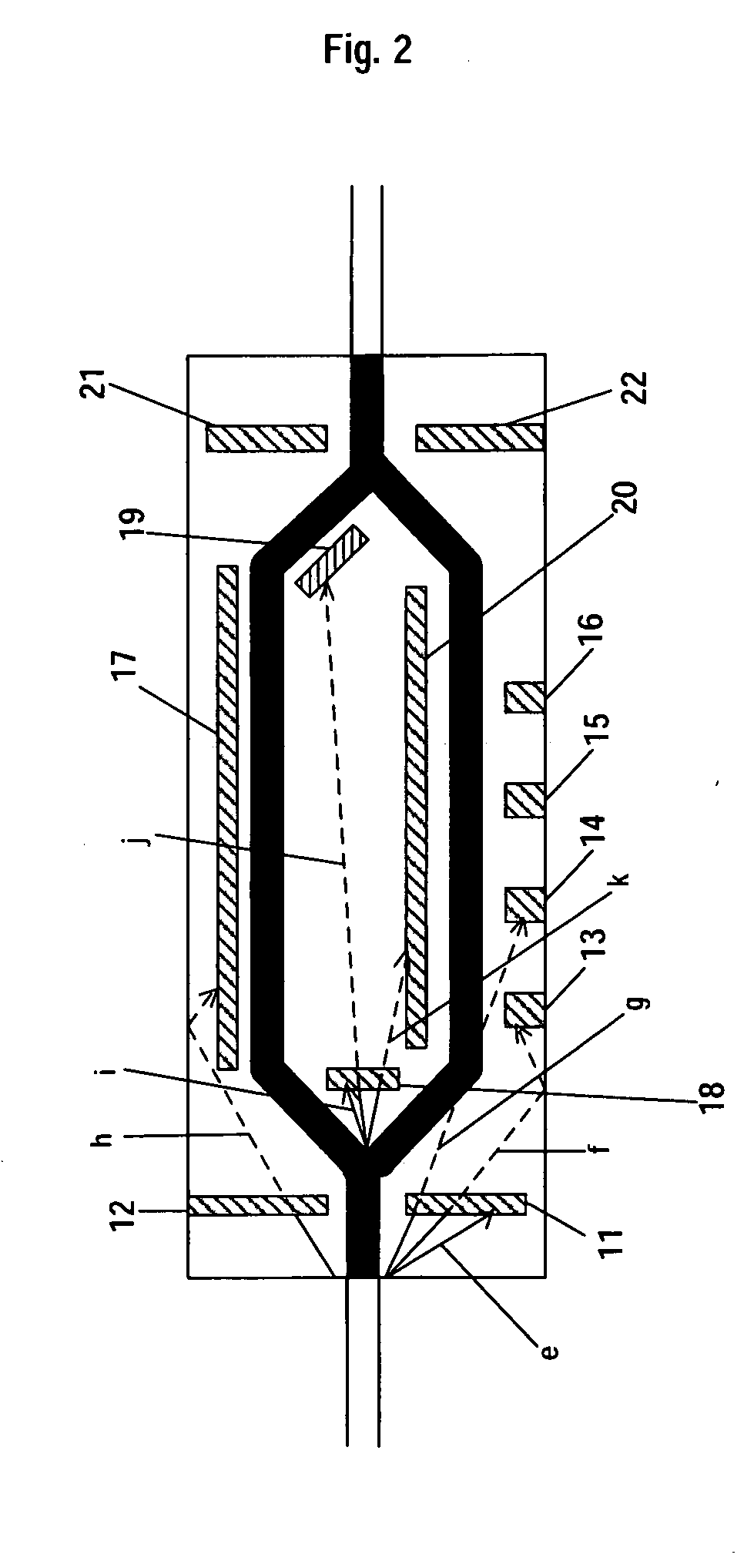Optical modulator
a technology of optical modulator and extinction ratio, applied in the field of optical modulator, can solve the problems of deterioration of optical modulator characteristics, affecting the performance of optical modulators, increasing optical loss, etc., and avoiding degradation, reducing optical loss, and improving optical loss
- Summary
- Abstract
- Description
- Claims
- Application Information
AI Technical Summary
Benefits of technology
Problems solved by technology
Method used
Image
Examples
second embodiment
[0081] the present invention is explained in the following.
[0082] As shown in FIG. 4, there exist stray lights 1 and m having a vector component in the thickness direction of the substrate for the stray light of the optical modulator, as well as the stray light in parallel with the surface of the substrate.
[0083] The stray light like the stray lights 1 and m that moves in the thickness direction of the substrate reflects at a base 30 or the side face of the substrate, enters the optical waveguide, and possibly interferes with the light passing through the optical waveguide.
[0084] In order to reject such stray light, as shown in FIG. 5, a low refractive index area 40 is formed such that it surrounds the optical waveguide.
[0085] By making the refractive index of the low refractive index area lower than that of the substrate, stray lights o and h that are released outside of the low refractive index area are reflected at the boundary surface of the substrate and the low refractive i...
third embodiment
[0098] Subsequently, the third embodiment is explained.
[0099] As shown in FIG. 7, a high refractive index area 42 is formed on the reverse face (base) or side face of the substrate. As the method for forming the high refractive index area, doping a material having said high refractive index into the substrate by thermal diffusion etc can form the high refractive index area.
[0100] The high refractive index area enables the stray light reflecting at the reverse face or side face of the substrate to be trapped in the high refractive index area, and therefore to be prevented from moving toward the optical waveguide again.
[0101] Further, in order to reject stray light reflection from the base or side face of the substrate of the optical modulator more effectively, antireflection treatment, for example coating these faces with an optical absorber material such as carbon black, or an antireflection coating, can be given.
[0102] Also, combining above described various embodiments if neces...
PUM
| Property | Measurement | Unit |
|---|---|---|
| distance | aaaaa | aaaaa |
| frequency | aaaaa | aaaaa |
| input power | aaaaa | aaaaa |
Abstract
Description
Claims
Application Information
 Login to View More
Login to View More - R&D
- Intellectual Property
- Life Sciences
- Materials
- Tech Scout
- Unparalleled Data Quality
- Higher Quality Content
- 60% Fewer Hallucinations
Browse by: Latest US Patents, China's latest patents, Technical Efficacy Thesaurus, Application Domain, Technology Topic, Popular Technical Reports.
© 2025 PatSnap. All rights reserved.Legal|Privacy policy|Modern Slavery Act Transparency Statement|Sitemap|About US| Contact US: help@patsnap.com



